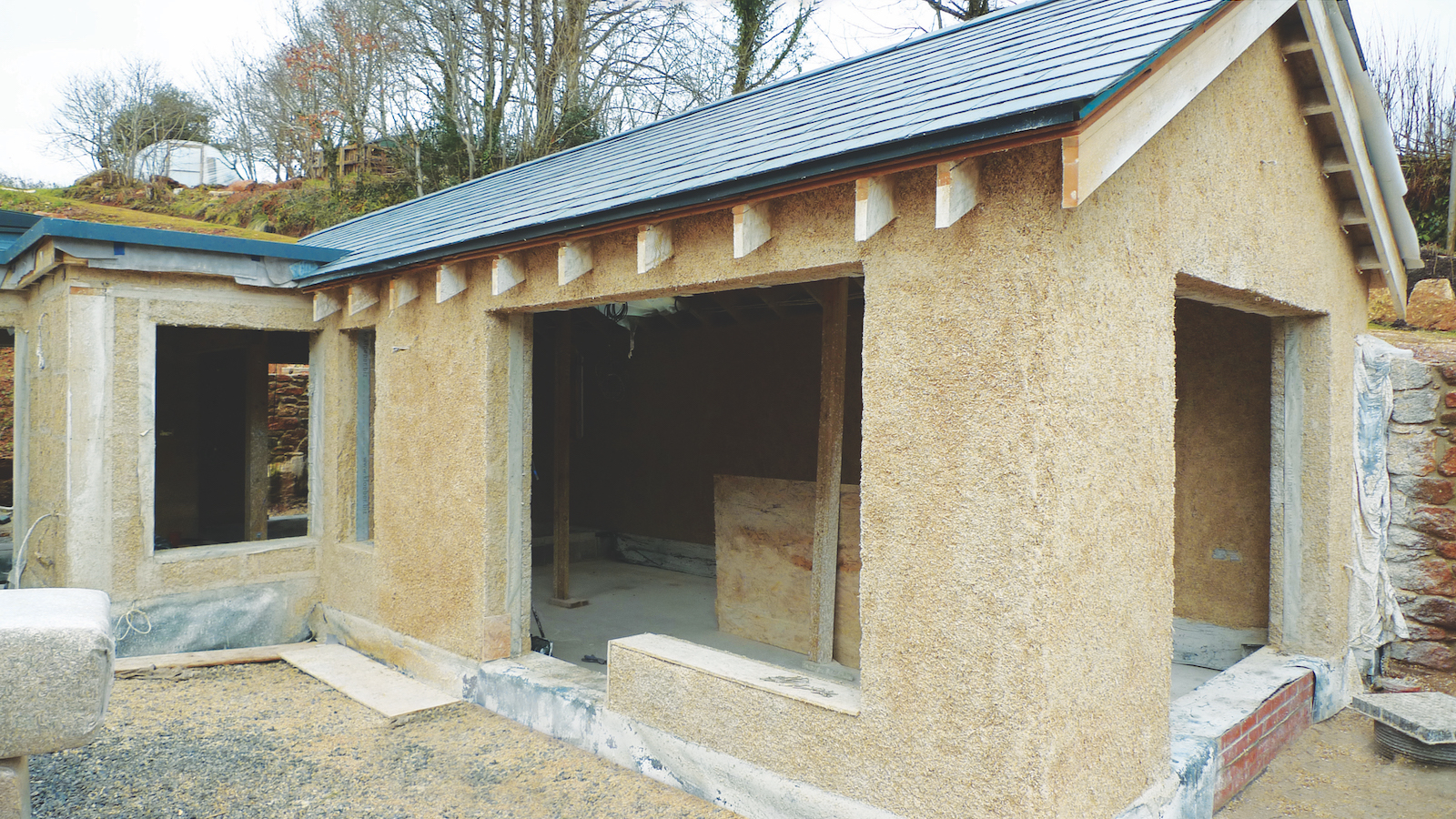What should construction managers know about building with hemp? CM asks William Stanwix from the Hemp Block Company

What’s different with hemp compared to conventional building?
Hemp blocks are made from natural materials and the main difference is how they manage moisture.
Conventional housebuilding aims to eliminate moisture from the wall, using plastic vapour barriers internally and waterproof finishes externally. The danger with this is that if moisture does get into the wall, through poor detailing or construction, it gets trapped and can lead to mould and sick building syndrome.
Rather than eliminate moisture, natural materials manage moisture in a passive way. Natural materials are commonly described as breathable or, more accurately, vapour or moisture permeable.

“Anyone who can lay conventional blocks can lay hemp blocks”
This is similar to the difference between a rubber boot and a Gore-Tex boot. They both keep out external moisture but the Gore-Tex boot also allows the moisture from your sweaty feet to escape.
The consequence for your building (and this becomes more important as buildings become more airtight) is that a house built with natural hemp blocks relies far less on mechanical ventilation systems to manage internal moisture.
Because your wall is now vapour permeable your finishes also become vapour permeable to allow moisture out. Cement renders become lime renders, cement mortars become lime mortars and, as in conventional construction, timber or other cladding systems require a ventilated gap behind them.
What structure types are they typically used with?
Hemp blocks typically are paired with timber frame construction – stud frame or portal frame – but they can be used with a steel or concrete frame (although the steel would have to be painted to protect it from corrosion). With a stud frame, the blocks will make up part of or all of the wall build up.
With a portal frame – perhaps the simplest way of using them – you’d erect a portal feature oak or glulam frame. Then you’d wrap this with thick (300 or 400mm) hemp blocks.
In renovations, hempcrete blocks can replace wattle and daub panels, or you can put up a skin on the inside or outside of a solid walled property and use them as solid wall insulation.
What are the common pitfalls?
To make the most of hemp blocks, the designer needs to understand how they function.
Hemp blocks provide insulation, a backing for plasters and renders (no plasterboard required) and although they are not structurally load bearing, they do support their own self weight and that of the plaster or render. Despite this, it is not uncommon to see plasterboards specified with the blocks, or a vapour barrier on the internal side of the wall.
Because of the fundamental differences between hemp blocks and conventional construction, it is critical that they are considered and understood early on in a project. It is difficult to ‘shoehorn’ hemp blocks into an otherwise conventional build.
Is any specialist training required?
Anyone who can lay conventional blocks can lay hemp blocks. At most, they will need to be shown how to mix lime mortar.
Spec sheets are provided which detail types and numbers of wall ties as well as any other metal work that might be required. The main difference here being that all metalwork should be stainless steel or otherwise protected with paint as the lime can corrode other metals.
Brick or block laying best practice guidelines (such as BS 5628-3:2005) are applicable in terms of protecting mortar from frost damage and excess heat or rain when laying.









